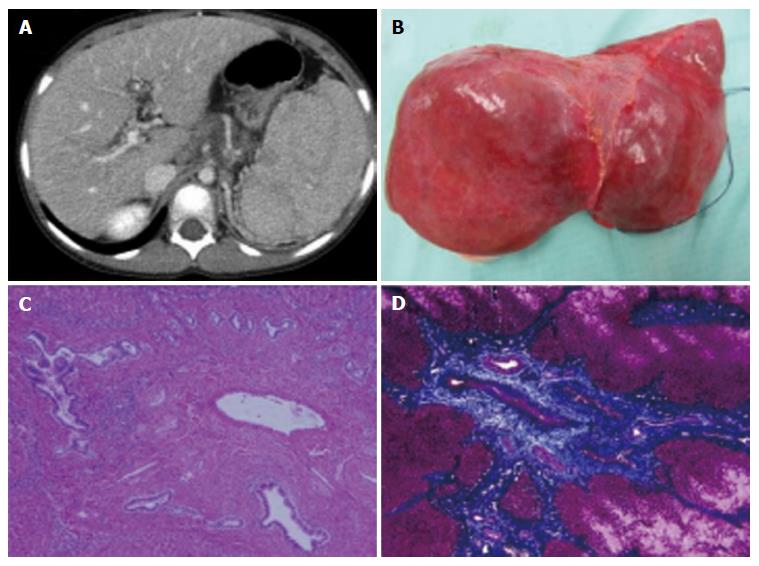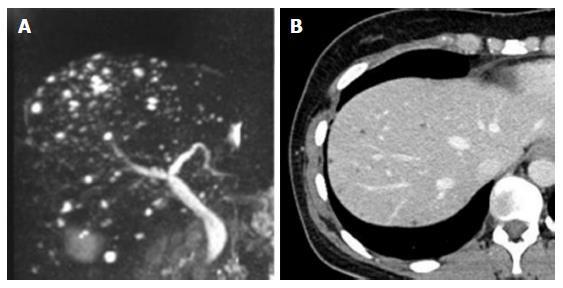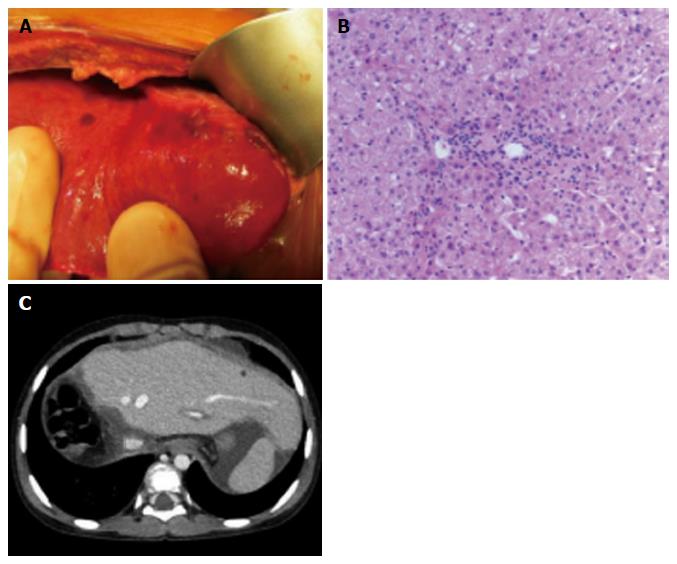Copyright
©The Author(s) 2016.
World J Gastroenterol. Nov 28, 2016; 22(44): 9865-9870
Published online Nov 28, 2016. doi: 10.3748/wjg.v22.i44.9865
Published online Nov 28, 2016. doi: 10.3748/wjg.v22.i44.9865
Figure 1 Computed tomography scan (A), macroscopic finding (B) and histology findings (C, D) of the recipient.
A, B: Reveals splenomegaly due to portal hypertension (A), macroscopic finding of the recipient’s native liver (B). Her native liver shows fibrotic changes in the portal area with proliferation of the pseudocholangiolar ducts, which is consistent with congenital hepatic fibrosis (C, D). C: Hematoxylin-eosin staining; D: Azan staining. Magnification × 100.
Figure 2 Magnetic resonance imaging and computed tomography scan of the donor.
Magnetic resonance imaging scan of the donor shows 3-5 mm multiple nodules with high intensity in T2 weighted image (A). Her computed tomography scan also reveals multiple low-density area of 3-5 mm in diameter. Multiple biliary hamartoma, also known as von Meyenburg complex, was suspected.
Figure 3 Clinical findings during the recipient’s surgery.
During living donor liver transplantation, we identified the small lesions of the graft liver suspected as biliary hamartoma after reperfusion (A). Time zero biopsy of the graft liver revealed slight fibrosis around the portal area; metavir fibrosis score F0 (B) (magnification × 100). Computed tomography scan on postoperative day 28 (C).
Figure 4 Clinical course of the recipient after living donor liver transplantation.
Her graft liver function was good and she was discharged on postoperative day 31. ALT: Alanine transaminase; T-Bil: Total bilirubin.
- Citation: Yamada N, Sanada Y, Katano T, Tashiro M, Hirata Y, Okada N, Ihara Y, Miki A, Sasanuma H, Urahashi T, Sakuma Y, Mizuta K. Pediatric living donor liver transplantation for congenital hepatic fibrosis using a mother’s graft with von Meyenburg complex: A case report. World J Gastroenterol 2016; 22(44): 9865-9870
- URL: https://www.wjgnet.com/1007-9327/full/v22/i44/9865.htm
- DOI: https://dx.doi.org/10.3748/wjg.v22.i44.9865












